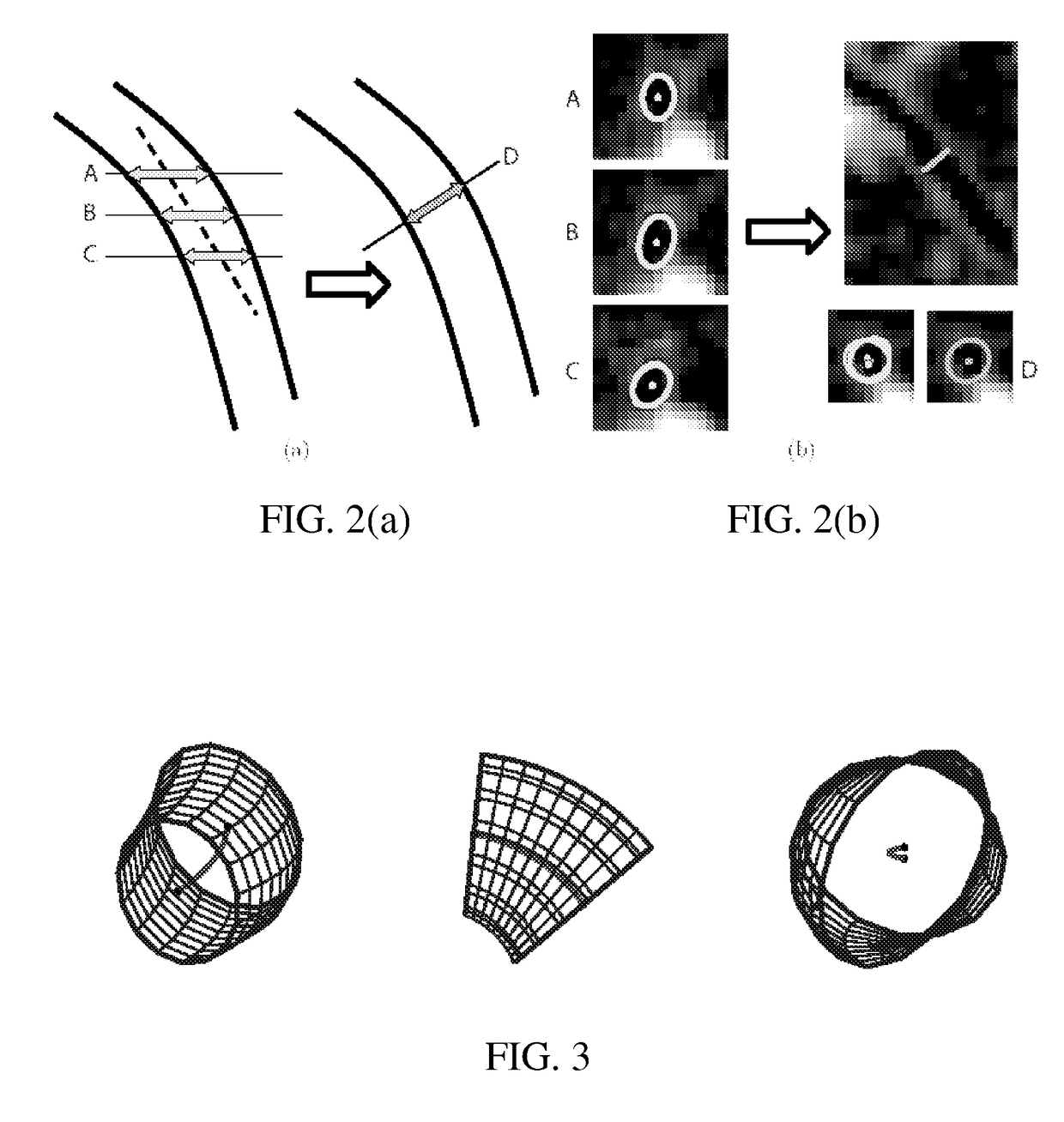Medical image reporting system and method
a medical image and reporting system technology, applied in the field of medical imaging, can solve the problems of non-standard patient anatomy, exacerbate difficulties, and fail to extract small peripheral airways by fully automatic methods, and achieve the effects of low false-positive rate, strong performance, and high sensitivity to peripheral airways
- Summary
- Abstract
- Description
- Claims
- Application Information
AI Technical Summary
Benefits of technology
Problems solved by technology
Method used
Image
Examples
Embodiment Construction
[0022]We propose a global automatic airway segmentation algorithm. The algorithm uses seeded region-growing to quickly and reliably extract the major airways. Leakage is avoided by smoothing the image. The algorithm also runs an efficient nonlinear filter over the entire lung volume in search of airway signatures. The filter output guides and constrains a locally-adaptive region-growing algorithm, which segments and connects entire airway branches. Finally, a novel graph-partitioning algorithm makes an optimal global decision on which branches to retain in the segmentation.
[0023]The proposed automatic segmentation algorithm extracts a large fraction of the visible airways with few false positive branches. For some applications, however, even this high accuracy rate can be insufficient. Consider, for example, image-based bronchoscope guidance for peripheral pulmonary lesions.29, 32 Here, VB renderings are compared to live bronchoscopic video to guide the physician along a predefined ...
PUM
 Login to View More
Login to View More Abstract
Description
Claims
Application Information
 Login to View More
Login to View More - R&D
- Intellectual Property
- Life Sciences
- Materials
- Tech Scout
- Unparalleled Data Quality
- Higher Quality Content
- 60% Fewer Hallucinations
Browse by: Latest US Patents, China's latest patents, Technical Efficacy Thesaurus, Application Domain, Technology Topic, Popular Technical Reports.
© 2025 PatSnap. All rights reserved.Legal|Privacy policy|Modern Slavery Act Transparency Statement|Sitemap|About US| Contact US: help@patsnap.com



